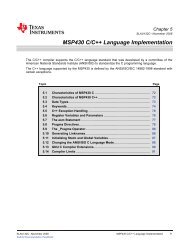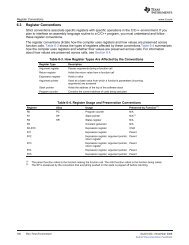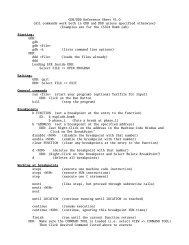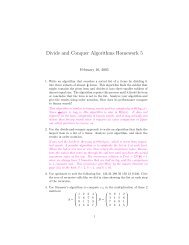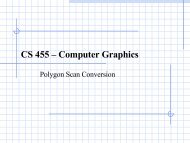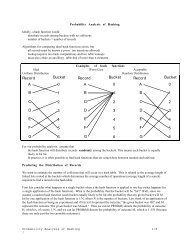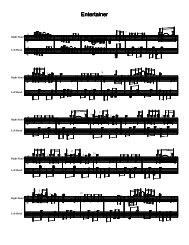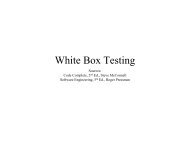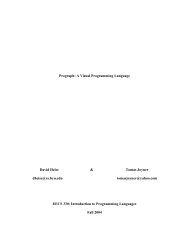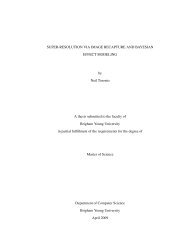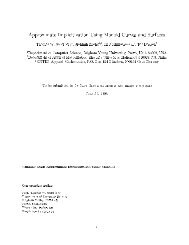A naïve Bayes Classifier for Web Document Summarie...
A naïve Bayes Classifier for Web Document Summarie...
A naïve Bayes Classifier for Web Document Summarie...
Create successful ePaper yourself
Turn your PDF publications into a flip-book with our unique Google optimized e-Paper software.
478 M. S. Pera & Y.-K. NgLatent Semantic Analysis (LSA) summarization method in Ref. 9, and the Top-Nmethod in Ref. 26. We also compare the per<strong>for</strong>mance of CorSum(-SF) with theones in Refs. 2, 7, 17, 18 and 21.The Top-N summarizer 26 is considered a naive summarization approach, whichextracts the first N (≥ 1) sentences in a document D as its summary and assumesthat introductory sentences contain the overall gist of D.Gong 9 applies Latent Semantic Analysis (LSA) <strong>for</strong> summarization. LSA firstestablishes (i) inter-relationships among words in a document D by clusteringsemantically-related words and sentences in D and (ii) word-combination patternsthat recur in D which describe a topic or concept. LSA selects the highest-scoredsentences that contain recurring word patterns in D to <strong>for</strong>m the summary of D.CollabSum in Ref. 32 creates the summary of D using sentences in D and documentsin the cluster to which D belongs. To create the summary of D, CollabSumrelies on (i) Inter-Link, which captures the cross-document relationships of a sentencewith respect to the others in the same cluster, (ii) Intra-Link, which reflectsthe relationships among sentences in a document, (iii) Union-link, which is basedon the inter- and intra-document relationships R, and (iv) Uni<strong>for</strong>m-Link, whichuses a global affinity graph to represent R.Martins and Smith 21 create sparse summaries, each of which contains a smallnumber of sentences that reflect representative in<strong>for</strong>mation in a document. InRef. 21 summarization is treated as an integer linear problem and an objectivefunction is optimized which incorporates two different scores, one reflecting thelikelihood of selecting a sentence S to be part of a summary and another the compressionratio of S. Given a document D, the subset of sentences in D that maximizesthe combined objective function score yields the summary of D. The authorsof Ref. 21 consider both unigrams and bigrams in compressing sentences, and theconducted empirical study shows that unigrams achieve the highest per<strong>for</strong>mance intext summarization.Dunlavy et al. 7 rely on a Hidden Markov Model (HMM) to create the summaryof a document, which consists of the top-N sentences with the highest probabilityvalues offeaturescomputed usingthe HMM. The features used in the HMM include(i) the number of signature terms in a sentence, i.e., terms that are more likely tooccur in a given document rather than in the collection to which the documentbelongs, (ii) the numberof subject terms, i.e., signatureterms that occur in headlineor subject leading sentences, and (iii) the position of the sentence in the document.Since the HMM tends to select longer sentences to be included in a summary, 7sentences are trimmed by removing lead adverbs and conjunctions, gerund phrases,and restricted relative-clause noun phrases.Binwahlan et al. 2 introduce a text summarization approach based on a particleswarm optimization which determines the weights to be assigned to each of thefollowing text features: (i) common number of n-grams between a given sentenceand the remaining sentences in the same document, (ii) word sentence score, whichis computed using the TF-IDF weights ofwordsin sentences, and (iii) sentence sim-




